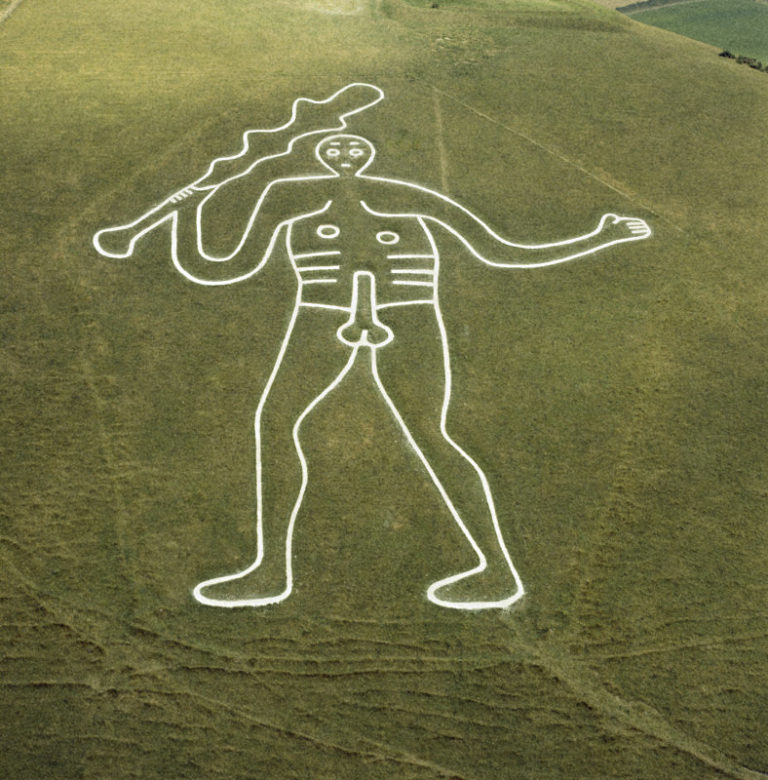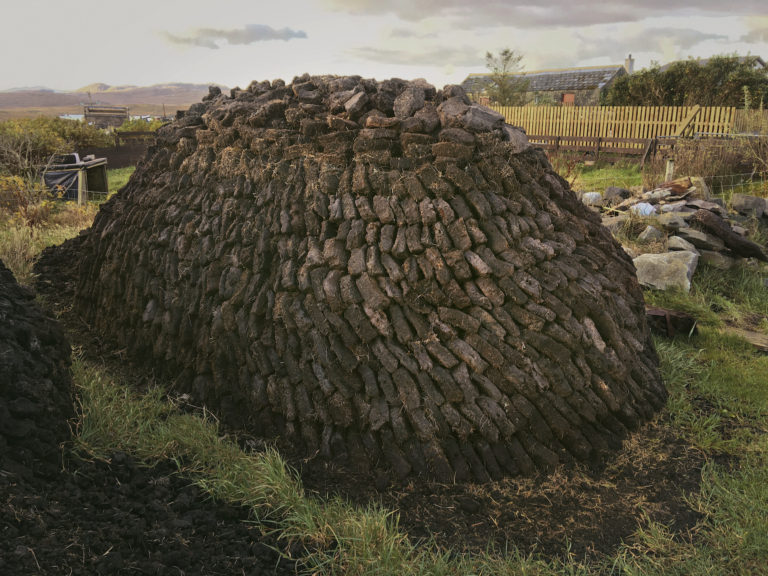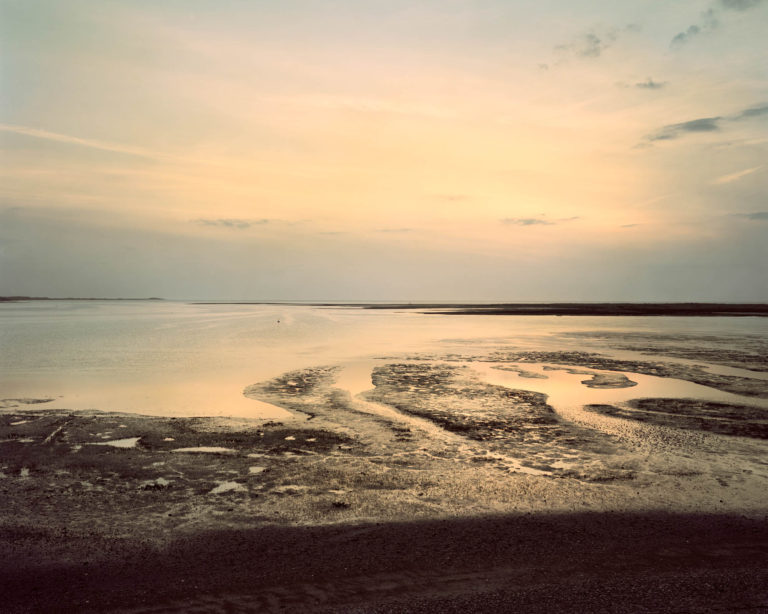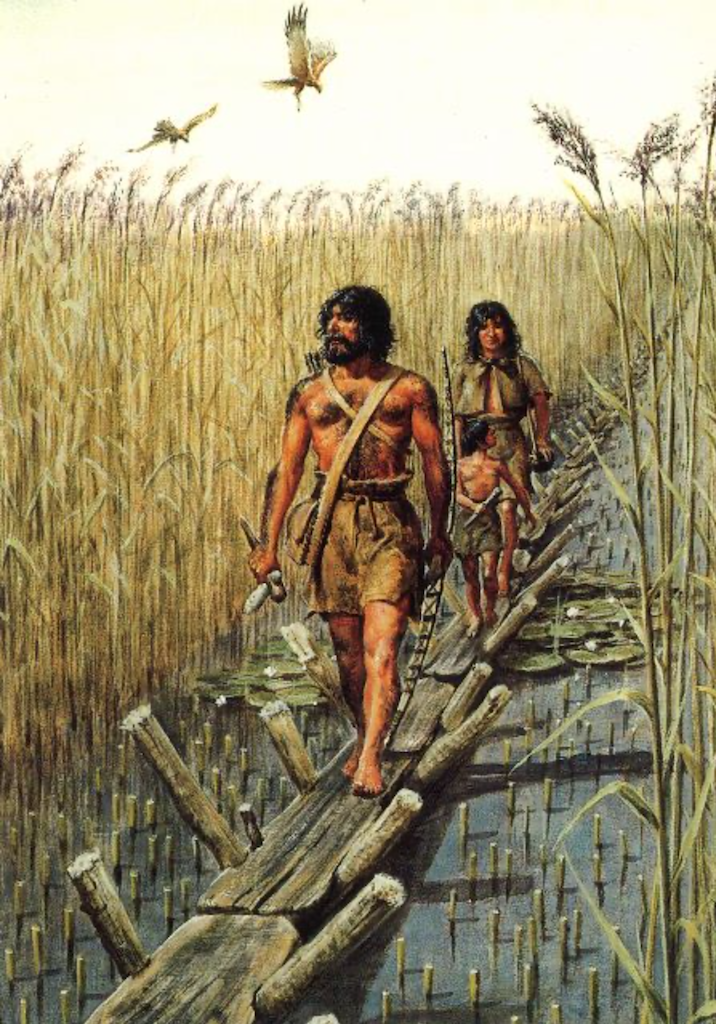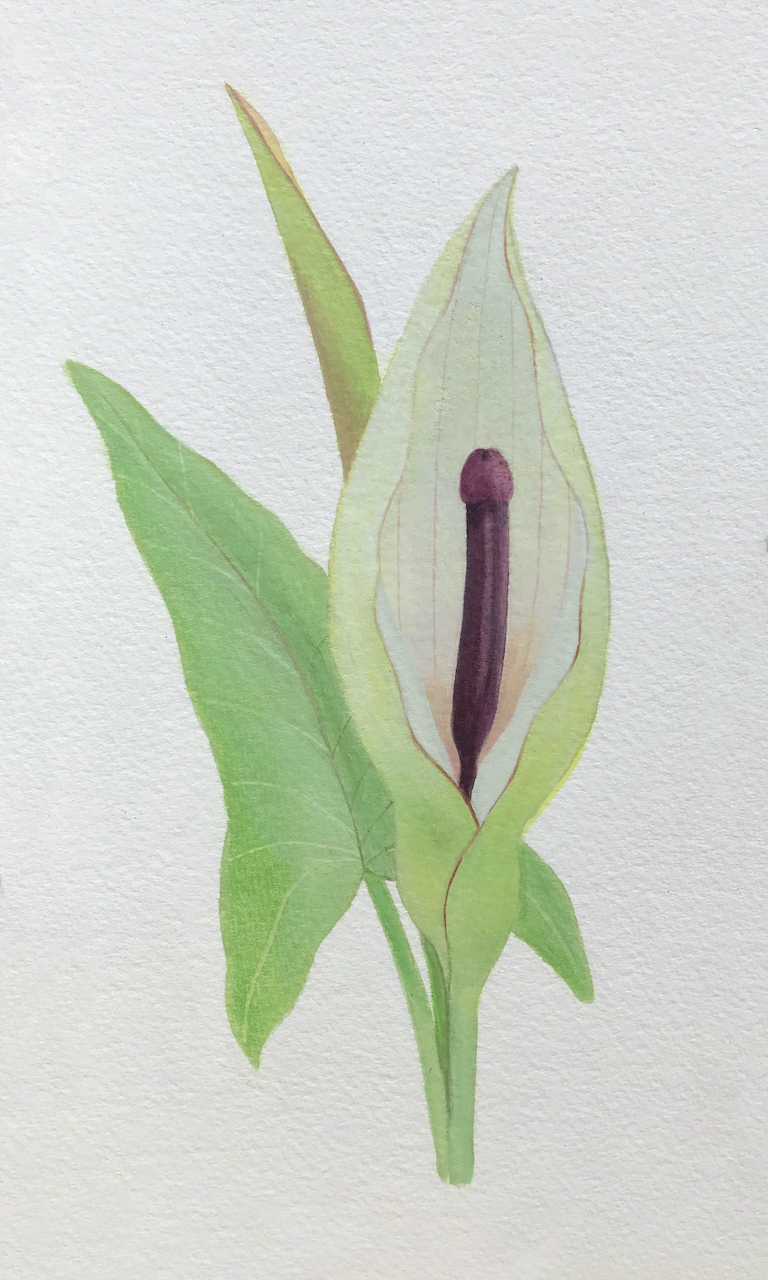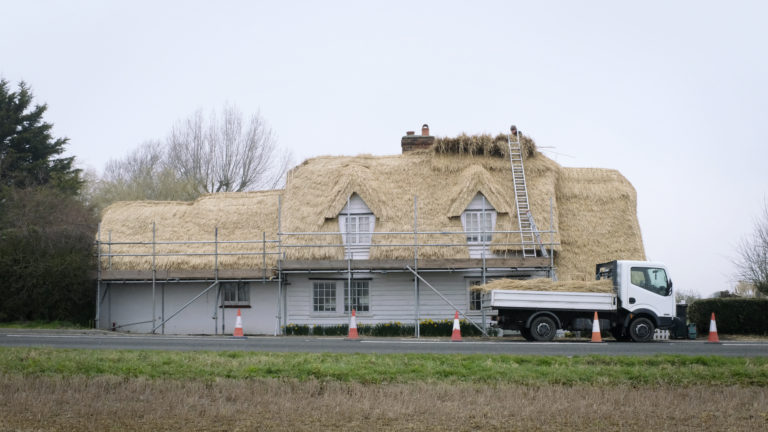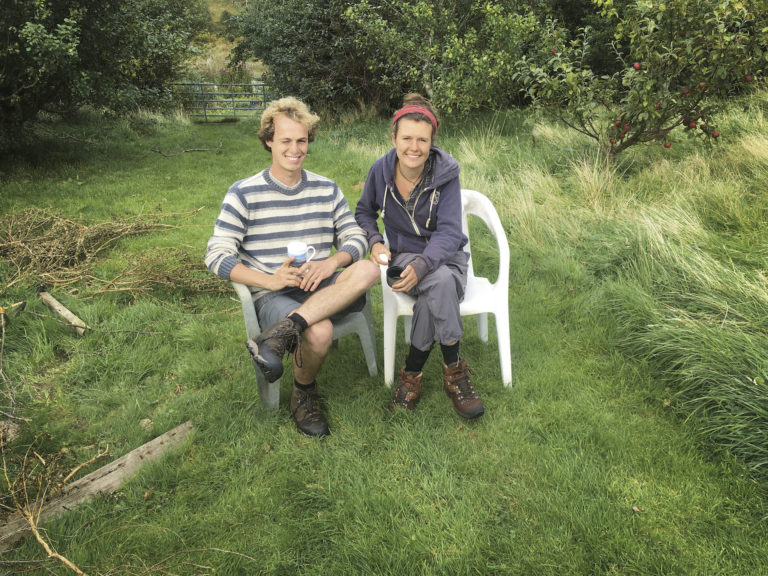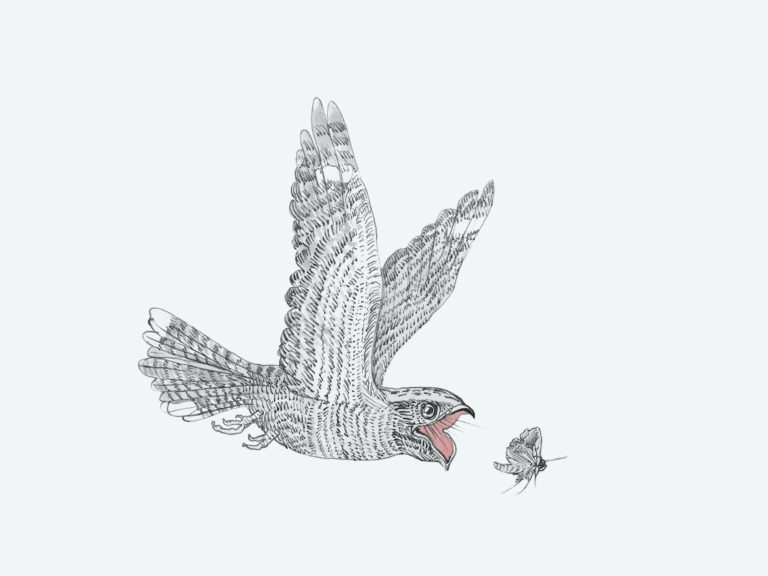Mid-Devon Country I James Ravilious. Beaford, Devon, England
Cream teas and Wombles deep in the Mid-Devon countryside
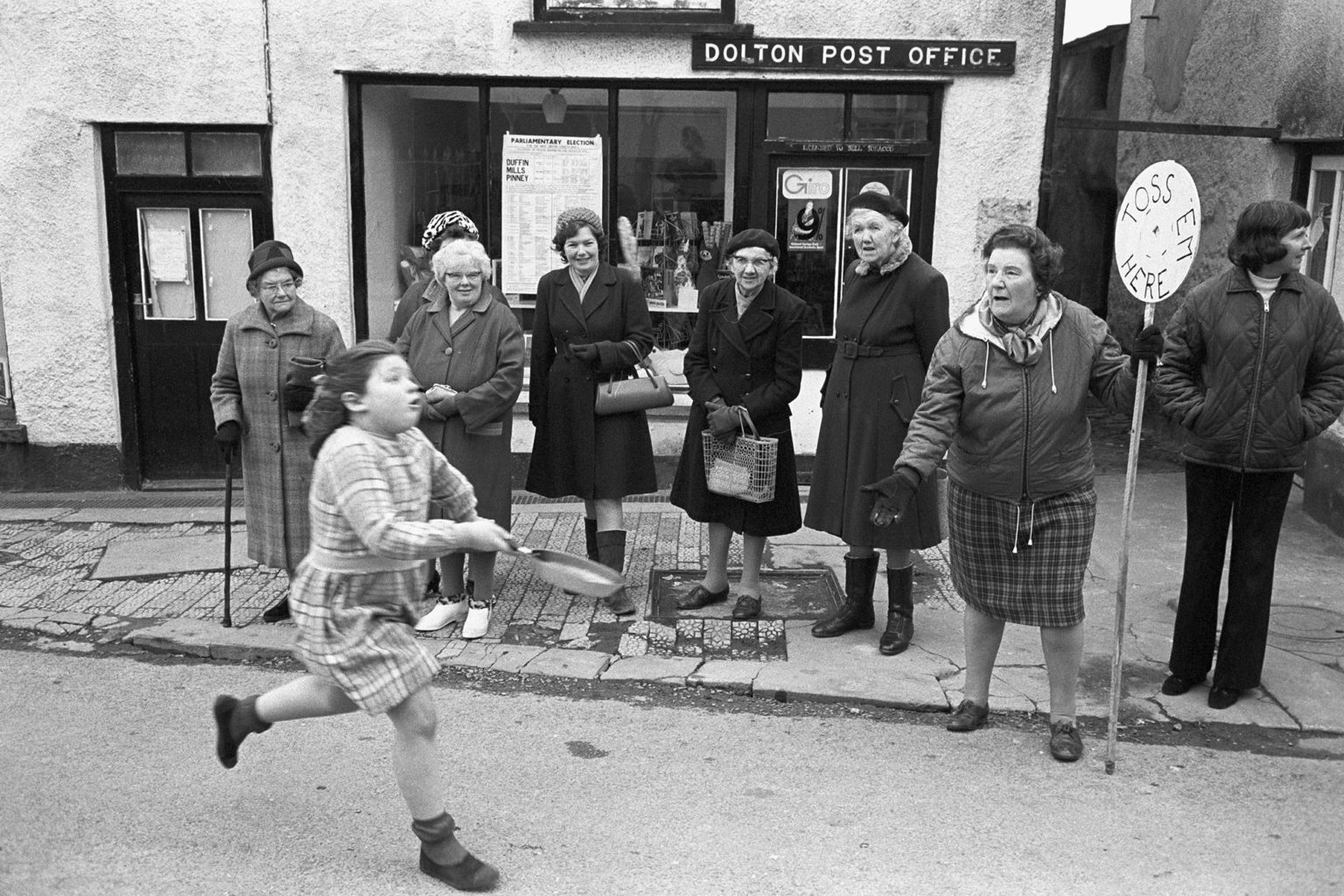
Pancake race, Dolton, February 1974
Mid Devon is deep deep country. Being one of the biggest counties in the UK, Devon has two coastlines in case you hadn’t noticed; between those two coasts are the narrow high banked lanes, wooded valleys, and tight villages of a rural idyll. As Sir John Betjeman said ‘…to the village for Devonshire tea, with strawberries and cream, where people will call us ‘my dear’ and rustics will be waiting on the cobbles outside the village inn to drink cider at opening time’. Maybe the twin coasts pull in the punters, leaving the center of the county unmolested.
The photographer James Ravilious spent years documenting this area with his camera and what a wonderful job he made of it. Like Bruce Gilden’s New York streets or Cartier-Bresson’s Paris, his vision has defined many people’s memory of this place. His famous parents were the artists Tirzah Garwood and Eric Ravilious who worked as engravers and painters. Having initially followed the same path, he converted to photography having seen a Cartier-Bresson show in London. There was an element of serendipity in his arrival in Devon in 1972 since the Beaford Arts Centre was looking for someone to document the local area. Over the next 17 years and 79,000 negatives, it became his working life and his life’s work. As the Beaford Archive says ‘James and his camera became a familiar sight locally. Living within the community for so long gave him both insider knowledge, and insider status – a privilege that few documentary makers are given. It allowed him to make a uniquely intimate portrait of a whole way of life in one small piece of English countryside just before it was modernised.’
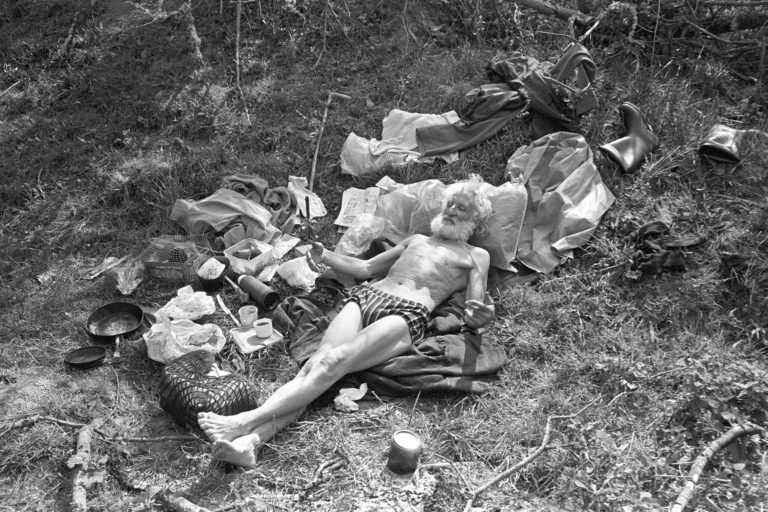
John Bennett, traveller, Dolton, April 1980
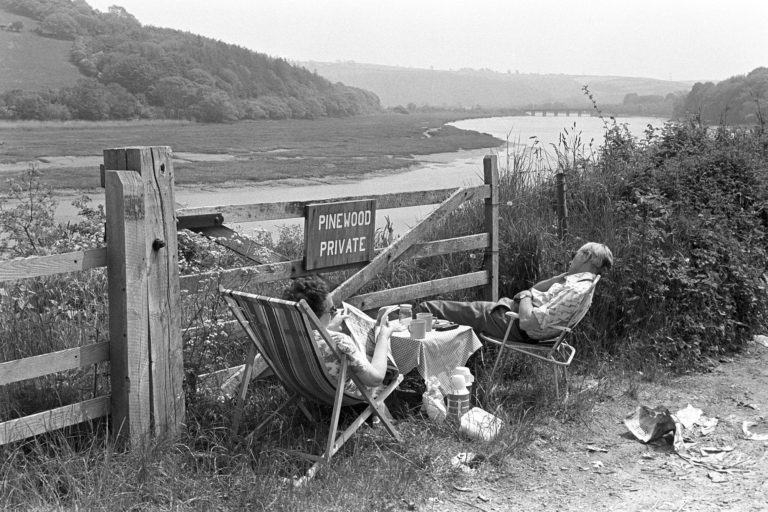
Sleeping tourists after picnic beside estuary, Bideford, April 1978
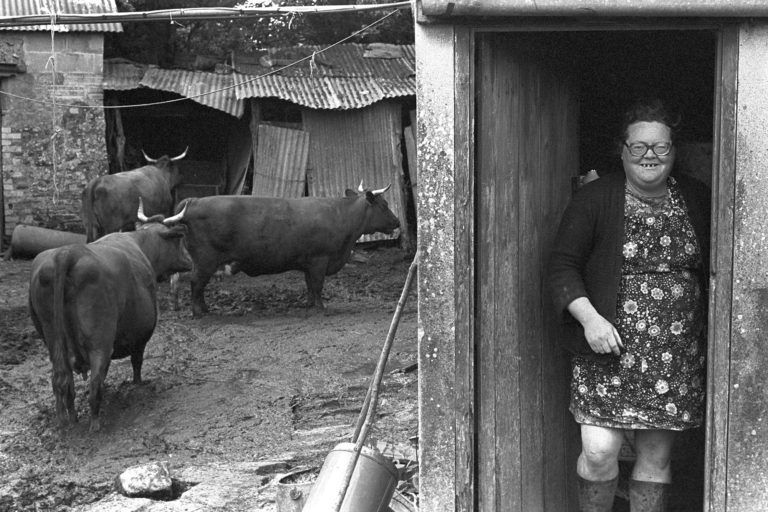
Olive Bennett with her Red Devon Cows, Cupper’s Piece, June 1979
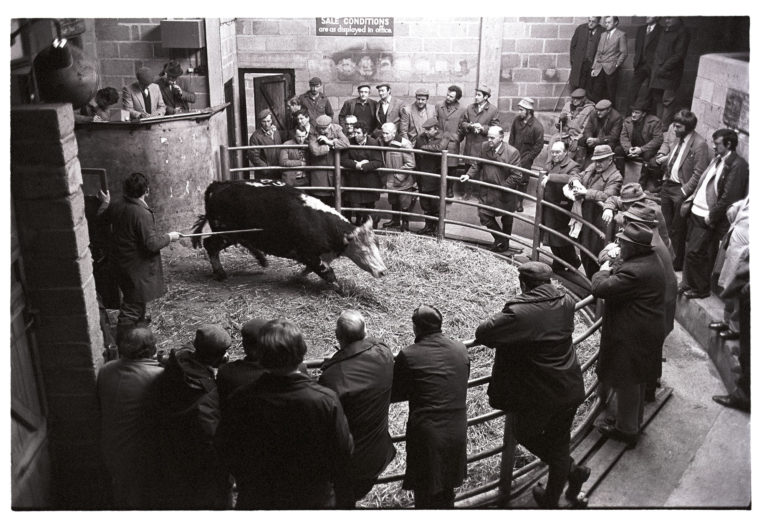
Cattle Auction, Hatherleigh Market, March 1980
There’s a definable tone and style to this work. It’s not the slightly harder vision of early Martin Parr, there is gentle humour here that is in keeping with someone working within their community even if they are also able to step outside of it to a degree. There’s also a particular beauty to the photographic prints. This work is properly crafted by hand in a way that echoes the traditional skills of many of the people he photographs. This is the pre-digital era and as James’ wife Robin tells it, he could ‘seldom bear to wait long to examine his catch’. This involved developing the negatives himself, there’s a great description of the analogue photographic procedure in her biography of James; ‘the whole process seemed to me a bit like elaborate cookery, but done mainly in the half-dark, dabbling in nasty liquids in an evil smelling kitchen’.
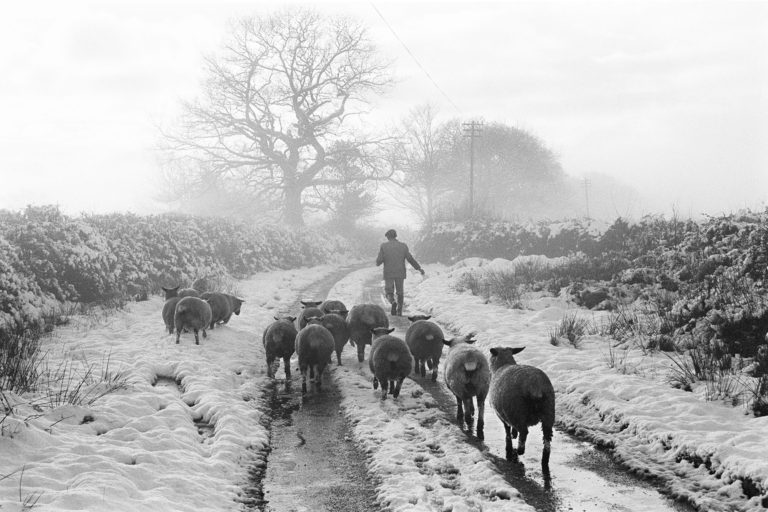
Irwin Piper taking his sheep for slaughter, Upcott, November 1981
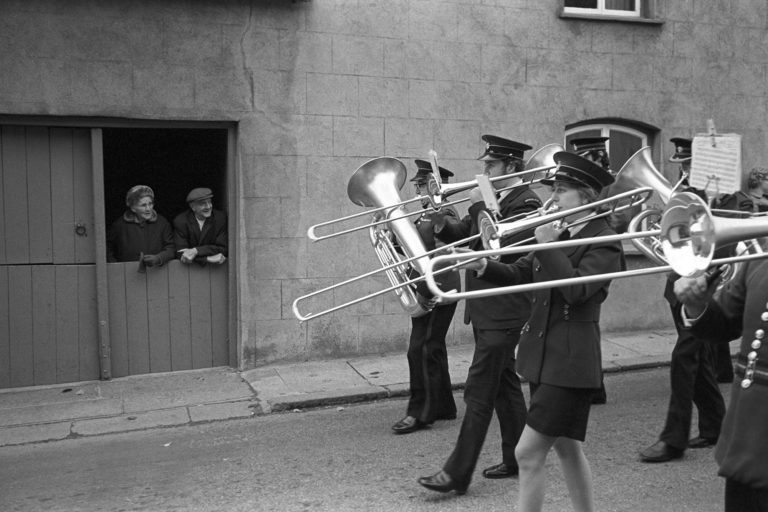
Hatherleigh Band parading at the Carnival, November 1975
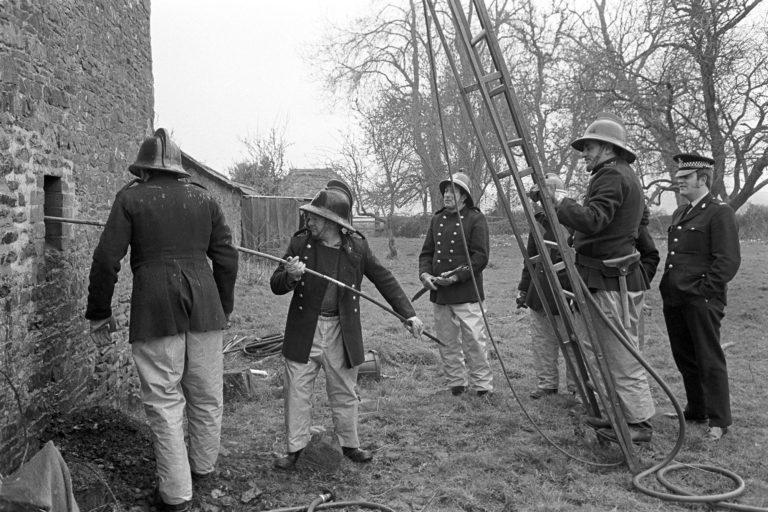
Firemen extinguishing chimney fire, Westacott, March 1974
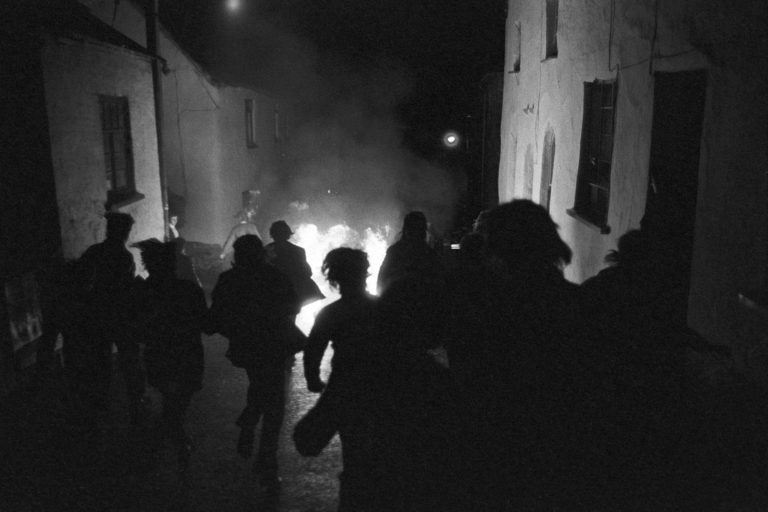
Running with tar barrels, Hatherleigh, November 1974
The nature of this work, a commission to make an archive, dictated a less finickity approach to what made the cut. In the words of the archive; ‘an independent photographer might have discarded his less successful images, but James had been commissioned to make a public document for posterity. He didn’t feel he could decide what would be interesting in the future. So when he came to make a digital catalogue of his Archive work he graded all his images, marking 401 of them Best, 1,300 Good, and the rest either Fair or Poor, judging them for technical quality, subject interest, and artistic merit’. Aside from his complete dedication to the project, this is perhaps one of the keys to its success. Everything is included and things that may not have seemed exceptional back then, do so now. Those high banked lanes still look picturesque but Ravilious reveals more life on the streets and in the fields than nowadays. The countryside can sometimes seem very quiet now, outside of the yearly summer fete; in his day public life was just a little more public. Has something been lost? Possibly the world the archive documents was just a different sort of idyll to now. Either way, there is a charm and intimacy to his work that is timeless in its appeal.
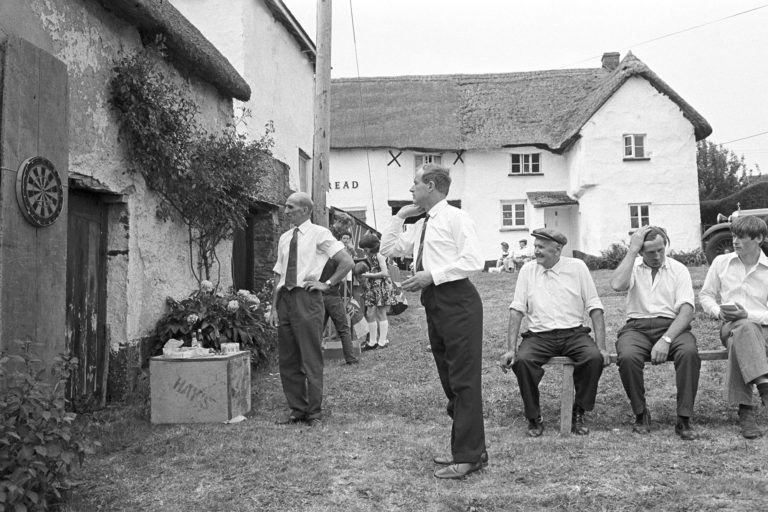
Playing darts at Iddesleigh Church Fete, July 1974
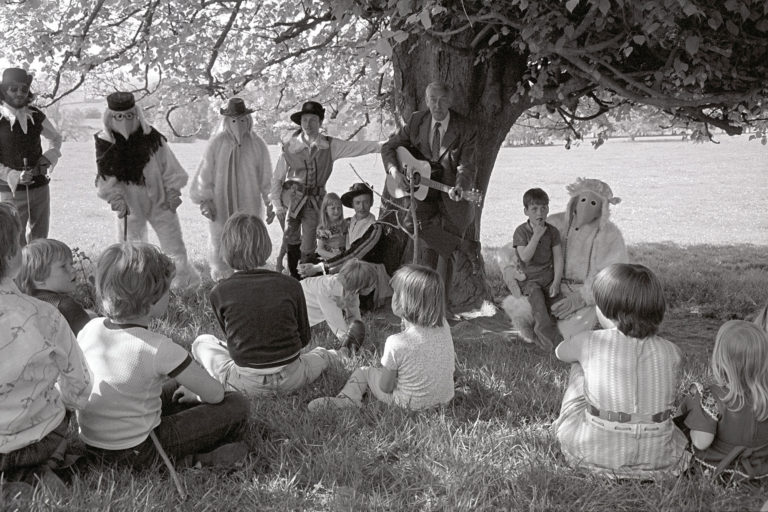
Wombles and Cavaliers, Gymkhana, Cross House, May 1977
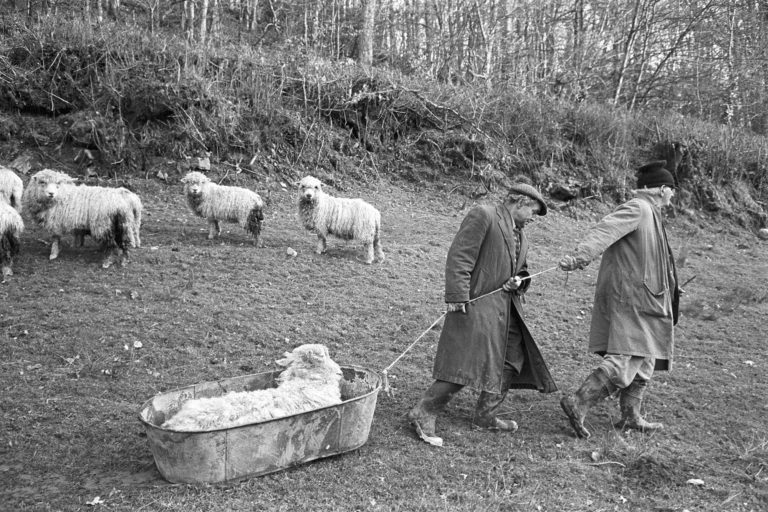
Archie Parkhouse and Ivor Brock moving a sick ram, Addisford, March 1976
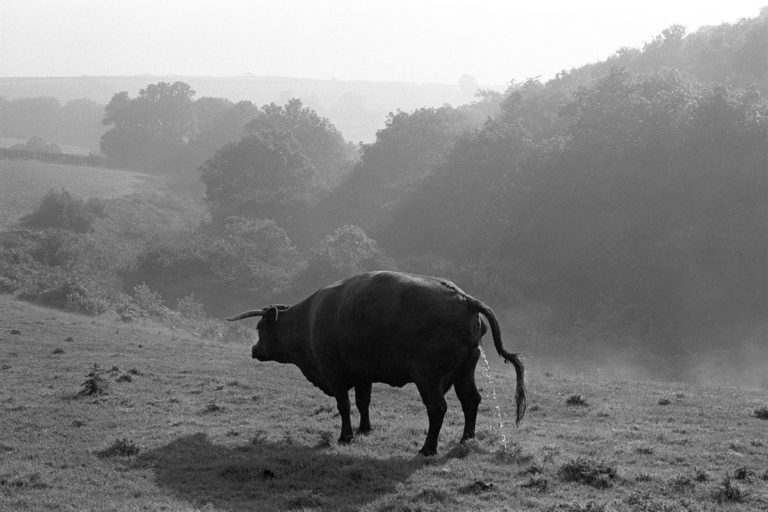
Red Devon cow, Narracott, September 1981
All images digitally scanned from a Beaford Archive negative
